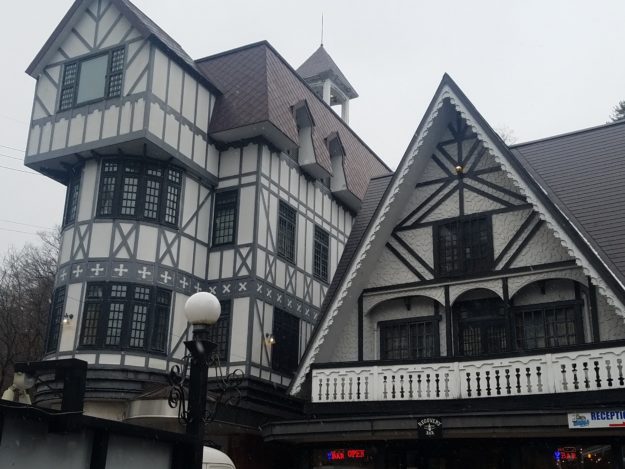Widgetized Section
Go to Admin » Appearance » Widgets » and move Gabfire Widget: Social into that MastheadOverlay zone
How to get to Hakuba: Monkeying around Nagano after slow start to skiing
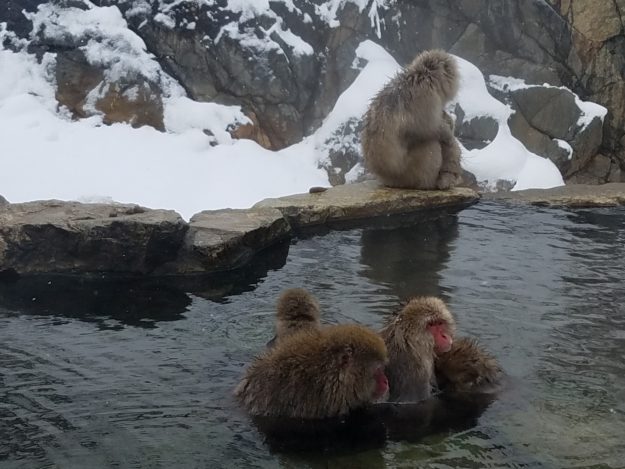
There’s one hard and fast rule of ski trips. Never pass on a sure thing for a maybe when it comes to snow quality and ski conditions. In planning our recent Japanese ski holiday, we wanted to see and ski both the Vail Resorts’ Epic Pass areas of Rusutsu on the north island of Hokkaido and Hakuba Valley on the main island of Honshu.
But our long-distance early intelligence via email and one very expensive phone call indicated Hakuba was experiencing an unusually warm and dry early season in mid-December, whereas Rusutsu was starting to get pounded. So we opted to head up to Hokkaido on Dec. 23 after a couple of nights and one very fun full day in Tokyo.
That turned out to be a very good call as we arrived at Rusutsu just in time for a highly productive two-day storm cycle. We used four of our five consecutive Epic Pass days with a couple hours of night skiing and three days of magnificent tree skiing at Rusutsu.
That third day (really more of a half day) put us on the road back to Sapporo late afternoon Dec, 26 for a 5 p.m. flight to Tokyo because we had booked three nights at a little mountain cottage in Hakuba Valley’s Happo One. A storm was in the forecast for Honshu’s Northern Alps, or Hida Mountains, where there are 12 total ski areas (10 on the Epic Pass).
We got into Tokyo’s Haneda Airport at 6:40 p.m., too late to catch the high-speed Hokuriku-Shinkansen bullet train to Nagano – leaving out of the gorgeous, main Tokyo Station but running less frequently because Typhoon Hagibis knocked out 10 trains in October.
It’s 187 miles from Tokyo Haneda to Nagano and then another 27 miles from Nagano to Hakuba (so 214 total miles, or just a little more than the distance from Denver to Aspen). The bullet train gets you to Nagano, host of the 1998 Winter Olympics made famous by Hermann Maier’s spectacular downhill crash and Jonny Moseley’s gold medal mogul run, in just 90 minutes. But then you still have to navigate the approximately 30 miles up into the mountains to Hakuba.
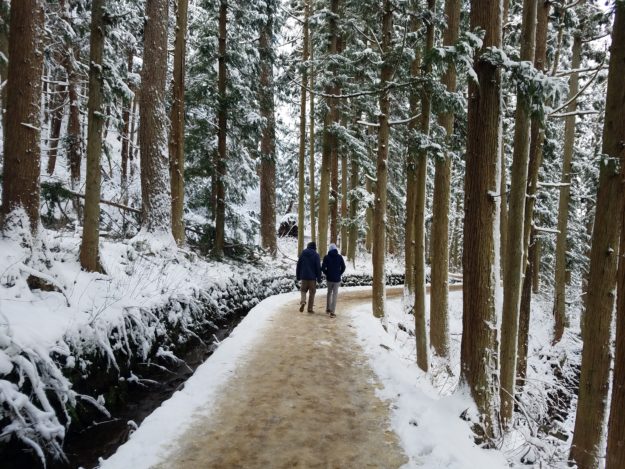
We were also too late into Tokyo for the Nagano Snow Shuttle – a comfortable motor coach that delivers you from the airport to the bus stations in Hakuba but takes five-plus hours. So we opted for the pricey Chuo Taxi airport shuttle, a shared van service that picks you up at your airport gate and delivers you to the front door of your lodging but still takes more than five hours.
Our driver met us at the gate with a sign for the Williams family and told us we had to wait for one more rider coming in on a plane an hour later. That was actually welcome news after skiing deep powder all morning, riding a bus an hour and half from Rusutsu to Sapporo and then an hour and a half flight to Tokyo. We were hungry and tired and found a great restaurant on the top floor of the beautiful Haneda Airport, which is much nicer than Narita International Airport.
Once in our taxi with our other passenger, the driver informed us it would be five and a half hours to Happo One after a short side trip to drop our other rider in Minami, where it started to rain heavily. Good thing we got dinner.
That put us into our awesome Zen Chalets Hakuba cabin in Happo One a little before 2 a.m. on Dec. 27, and it was absolutely pouring rain when we checked into our cozy accommodations with the lights and heat thankfully left on by the super-helpful management.
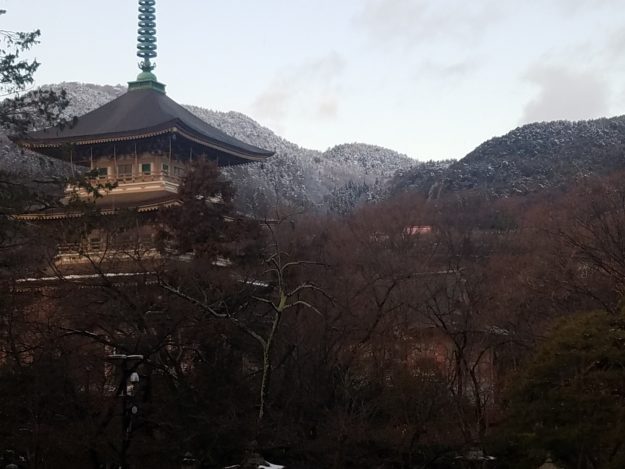
Granted we limited our transport options by deciding to ski deep pow at Rusutsu and fly from Sapporo to Tokyo later in the day, but by comparison it took us around four hours to take a bus the 61 miles from Rusutsu to Sapporo and then fly the 715 miles to Tokyo compared to 5.5 hours to drive the 214 miles from Tokyo to Hakuba. So consider your timing if you decide to ski both areas; we probably should have just stayed another night in Tokyo before heading up to Hakuba.
And as a side note, the train is also an option for getting from Tokyo to Sapporo and back but it will take you around nine hours each way because the Shinkansen bullet train only goes from Tokyo to Hakodate on the southern edge of Hokkaido, and then you have to take a slower train to Sapporo.
Anyway, all of this planes, trains and buses chatter is my way of saying we bit off a little more than we could chew with just eight total nights in Japan (two in Tokyo, three at Rusutsu and three at Hakuba). After arriving at nearly 2 a.m., Dec. 27, we were shot for the next day and wound up sleeping in while the rain poured down.
We spent what remained of that day just walking around Happo One as the rain changed over to snow. Then, with several of the Hakuba area ski resorts not yet operating and others only open on the upper slopes – requiring downloads to the base – we opted for the Japan Ski Tours trip to Jigokudani Monkey Park and the 7th-century Zenkō-ji Buddhist temple in Nagano.
The tour takes a full day by bus but includes a nice hike through the woods up to the hot springs famous for its population of snow monkeys and a fantastic traditional Japanese lunch in the lovely town of Obuse, where you can also check out museums, galleries, shops and sake brewery tasting rooms (the Nagano area is famous for its amazing variety of high-quality sake).
The tour concludes with a stroll through the beautiful Zenkō-ji Buddhist temple in downtown Nagano. Sure, it was a touristy day, but it felt like we really got a good feel for this beautiful area, which includes Vail’s sister city of Yamanouchi, although not on this particular tour.
Hakuba, by contrast, is very much an international ski destination where English is spoken in most places and many businesses are owned or run by Australians and New Zealanders. If you’re a ski traveler, much of Hakuba will feel familiar to you. Rusutsu, thus far, feels much less discovered and therefore far more authentic in a truly rural, Japanese sense.
Very little English is spoken in and around Rusutsu, and there’s no real ski town there, unlike Hakuba, which has that classic ski-town vibe – including a seemingly much more vibrant night life. The ski terrain is very different as well, with Rusutsu lower angle and serving up acres of untouched tree skiing and the Hakuba resorts far more sheer and dramatic.
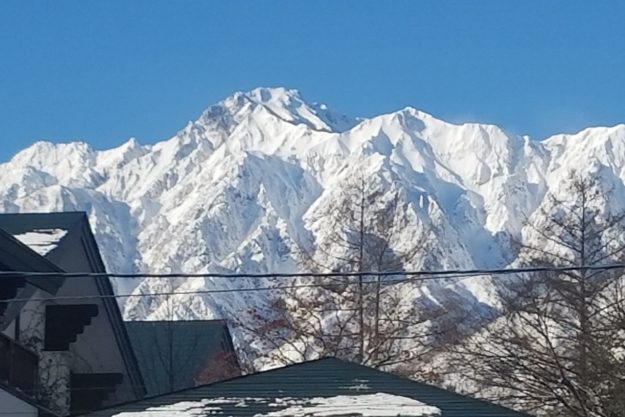
While we didn’t actually ski there, I could tell there were steeper chutes and more sustained vertical drops to be had, and those slopes are usually covered top to bottom for the holidays. I also hear it’s been dumping in Hakuba ever since we headed back to Tokyo on the Nagano Snow Shuttle the morning of Dec. 29 (isn’t that typical of ski vacations?).
The mountains around Hakuba reminded me of the Coastal Range in British Columbia or maybe even to a lesser degree the famed Chugach Mountains of Alaska. Hopefully, one of these years I’ll make it back to truly sample the goods.
Editor’s note: This is part 3 of a 3-part blog series on the Williams 2019 Japow Tour. Click here for part 1 and here for part 2.
